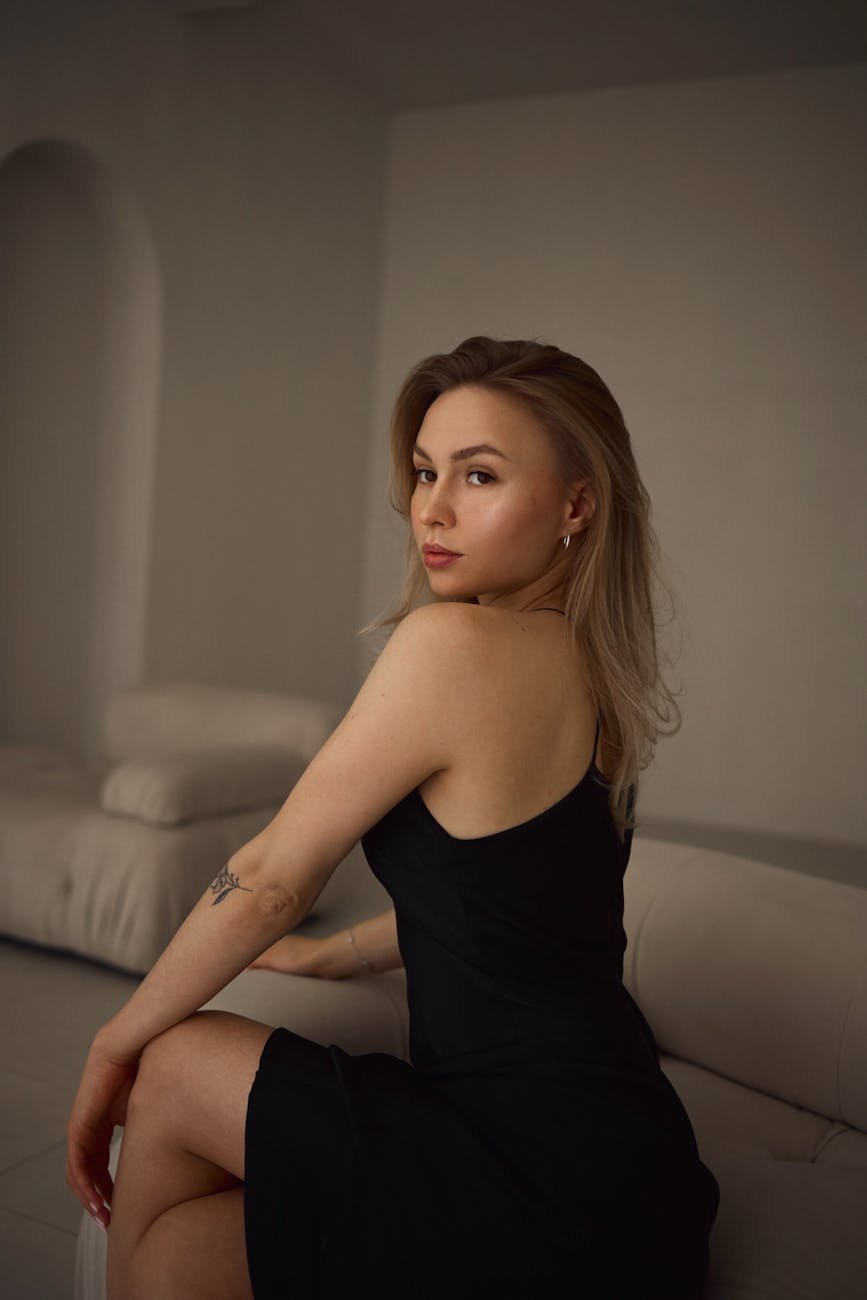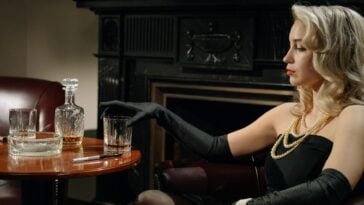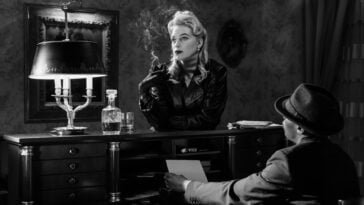Introduction to Femme Fatales
The archetype of the femme fatale, translating as “fatal woman,” has deep roots that trace back through centuries of literature, film, and cultural lore. Originating from early mythologies, these enigmatic and seductive women have captivated audiences with their blend of allure and danger. In various guises, the femme fatale has appeared in ancient Greek mythology, Jewish folklore, and Renaissance literature, compelling societies to wrestle with the dichotomy of desire and consequence she embodies.
The term “femme fatale” gained significant traction in the late 19th and early 20th centuries, particularly through the noir genre of the 1940s and 1950s in film. Characters like Phyllis Dietrichson in “Double Indemnity” and Brigid O’Shaughnessy in “The Maltese Falcon” became emblematic of the femme fatale’s dark glamour, combining cunning, beauty, and danger. These portrayals not only entertained but also reflected societal anxieties about gender roles, power, and morality.
Over the years, the femme fatale has evolved, adapting to the changing societal norms and values while retaining her core attributes of enigmatic charm and lethal intent. In contemporary contexts, she appears in various forms, from comic book icons like Catwoman to complex characters in modern noir films such as Amy Dunne in “Gone Girl.” This evolution illustrates the character’s enduring appeal and versatility, demonstrating how the femme fatale continues to captivate and intrigue.
Modern interpretations have expanded the dimensions of the femme fatale, often presenting her as a more nuanced character with personal agendas and emotional depth. Today, she is not merely a plot device but a subject of deeper exploration. This complex portrayal offers a richer tapestry of motivations and humanity, allowing for a multifaceted exploration of her role within the narrative framework.
This exploration sets the stage for an in-depth analysis of the dynamic elements contributing to the femme fatale’s timeless resonance in both style and substance. Through a historical lens and iconic references, we can gain insights into why this figure remains a potent symbol of power and mystique in cultural storytelling.
Defining Characteristics and Traits
Femme fatales are compelling figures whose defining characteristics and traits transcend the ordinary, embodying a complex amalgamation of intelligence, cunning, and irresistible allure. Central to their nature is a sharp intellect that allows them to navigate and manipulate their surroundings with an almost uncanny precision. This keen mental acuity differentiates them from traditional female archetypes and lends them an air of unpredictability. It’s not just their brains, however, but their ability to entwine it with sensual allure that renders them so captivating. They use their charm and beauty not merely as innate qualities, but as calculated tools to achieve their often enigmatic ends.
Another vital trait of femme fatales is their penchant for moral ambiguity. Unlike more straightforward characters, they revel in a murky space where right and wrong blur into shades of gray. This moral complexity reflects a deeper narrative of rebellion against the conventional roles prescribed to women. Rather than fitting neatly into the boxes of angel or demon, the femme fatale occupies a liminal space, a paradox that challenges societal norms and expectations surrounding female behavior. By adopting traits such as deceitfulness when necessary, they defy the passive, docile stereotypes imposed upon women, making a provocative statement about autonomy and power.
The femme fatale’s subversion of traditional gender roles serves as a mirror to broader societal anxieties about female empowerment. In their ability to control and dominate, they personify fears about the shifting dynamics of gender and power. Moreover, their success within patriarchal structures — often outsmarting male counterparts — elevates them as symbols of both admiration and apprehension. This duality enriches their character, making the femme fatale not just a figure of dark glamour but also a subversive icon that resonates with ongoing debates about gender equality and identity.
The Aesthetic of Femme Fatales
The aesthetic of femme fatales is a fascinating interplay of visual and stylistic elements that define their dark glamour. Central to this allure is their fashion choices, which often include sleek, form-fitting attire that exudes both sophistication and an air of mystery. Classic noir films, such as “Double Indemnity” and “The Maltese Falcon,” showcased femme fatales adorned in elegant yet somber garments. These outfits were typically characterized by deep hues, luxurious fabrics, and strategic accessorizing—such as long gloves or wide-brimmed hats—that added layers to their enigmatic persona.
Makeup is another significant aspect amplifying the femme fatale’s allure. Iconic examples like Rita Hayworth in “Gilda” and Lauren Bacall in “To Have and Have Not” epitomize the quintessential femme fatale look with bold red lips, sharp eyeliner, and defined cheekbones. This dramatic makeup served not only to enhance their beauty but also to signal their complexity and dangerous charm. The juxtaposition of a polished exterior with a treacherous interior remains an enduring theme in the portrayal of femme fatales.
In modern cinema, the femme fatale aesthetic continues to evolve while retaining its core elements. Characters like Catherine Tramell in “Basic Instinct” and Amy Dunne in “Gone Girl” reflect contemporary interpretations, often incorporating sleek modern attire and a minimalistic approach to makeup that underscored their calculated and manipulative nature. Their fashion choices—ranging from Catherine’s iconic white dress to Amy’s deceptively simple ensembles—are integral to their portrayal as modern-day femme fatales.
Contemporary fashion, too, has felt the impact of the femme fatale’s dark glamour. Runway shows and high-fashion editorials frequently pay homage to this archetype, drawing on the iconic elements of the femme fatale’s wardrobe and beauty routine. Designers and stylists craft collections featuring sharp silhouettes, deep color palettes, and bold makeup, effectively channeling the mystique and allure synonymous with femme fatales.
Thus, the aesthetic of femme fatales is not only rooted in visual elements but also woven into a broader cultural fabric, continually influencing and being influenced by ongoing fashion and media trends. Their timeless allure remains a captivating subject in both classic and modern contexts.
Psychological Complexity and Depth
The allure of the femme fatale extends beyond her striking exterior to the intricate layers of her psyche. These characters are unique because they subvert traditional gender norms, often taking on characteristics that defy societal expectations. Their motivations are not merely superficial or one-dimensional; rather, they are driven by a complex interplay of personal ambitions, emotional scarring, and larger societal influences.
One of the most compelling aspects of the femme fatale is her independence. She often emerges from a background of adversity, using her sharp intellect and cunning to navigate a world that seeks to subdue her. Take, for instance, the character of Phyllis Dietrichson in the film noir classic, “Double Indemnity”. Her actions are driven by an insatiable desire for freedom and power, catalyzed by a stifling domestic situation. Through manipulation, seduction, and ultimately betrayal, she reveals the lengths to which she will go to reclaim control over her destiny.
These characters are also marked by their vulnerabilities, which add depth to their personas. In “The Maltese Falcon”, another iconic film noir, Brigid O’Shaughnessy presents herself as a damsel in distress, only to be revealed as a master manipulator navigating her own complex agenda. Yet, her moments of vulnerability—whether genuine or feigned—provide glimpses into her multifaceted nature, making her both intriguing and relatable to the audience.
Moreover, societal pressures frequently influence femme fatales, illustrating their defiance against restrictive norms. In “Gone Girl”, Amy Dunne leverages societal expectations of femininity, innocence, and victimhood to orchestrate an elaborate scheme. Her calculated actions reflect a deep-seated resentment towards the roles imposed on her, highlighting the tension between individual desires and societal constraints.
Ultimately, the psychological complexity of femme fatales makes them enduring figures in fiction and cinema. Their motivations are rooted in a blend of personal vendettas, emotional wounds, and societal challenges, offering a rich tapestry of attributes that challenge audiences to reconsider simplistic notions of morality and identity.
The Femme Fatale in Literature
The archetype of the femme fatale has been a captivating element of literary tradition for centuries, embodying a potent blend of allure, danger, and mystery. From early examples in mythology to contemporary novels, this character has been pivotal in exploring themes of power, morality, and gender dynamics.
One of the earliest representations can be found in the mythological figure of Lilith, who, according to Jewish folklore, was Adam’s first wife and epitomized rebellious independence. Classic literature also offers femmes fatales with striking depictions, such as Lady Macbeth in Shakespeare’s “Macbeth.” Her ambition and manipulation of her husband mark her as a central force driving the moral corruption and chaos in the play.
Moving to the 19th century, the character of Becky Sharp in William Makepeace Thackeray’s “Vanity Fair” offers a compelling study of charm and cunning used to climb the social ladder. Hardy’s “Tess of the d’Urbervilles” provides another compelling example with Alec d’Urberville’s manipulative strategies to ensnare the pure Tess, reflecting the gender dynamics of power and exploitation. Additionally, Bram Stoker’s “Dracula” includes the vampires, particularly Lucy Westenra and the three brides of Dracula, who use their seductive allure to ensnare their victims, underlining themes of sexual promiscuity and moral corruption.
Contemporary literature continues to evolve the portrayal of femmes fatales, reflecting more nuanced considerations of gender and power. Gillian Flynn’s “Gone Girl” presents Amy Dunne, an intricate character who uses her intelligence and calculated duplicity to manipulate those around her, including the reader, challenging traditional gender roles and notions of victimhood.
These literary works not only entertain but also provoke thought, challenging readers to question societal norms and the often-blurred lines between right and wrong. Through these stories, the femme fatale remains a dynamic and multifaceted character, reflecting the complexities of human nature and societal constructs across various eras and cultures.
The Femme Fatale in Cinema
The portrayal of the femme fatale in cinema has profoundly shaped this captivating archetype, from the classic noir era to contemporary film. In the golden age of Hollywood, the femme fatale emerged as a central figure in film noir, her allure and mystery captivating audiences. Actresses like Barbara Stanwyck in “Double Indemnity” and Rita Hayworth in “Gilda” embodied these tantalizing women, their performances leaving indelible marks on the film industry. Their characters were often complex, blending seduction, intelligence, and ruthlessness in ways that challenged traditional gender roles of the time.
Classic noir films cemented the femme fatale’s place in cinematic history, with directors such as Billy Wilder and Alfred Hitchcock frequently exploring the depths of their enigmatic personas. These filmmakers crafted stories that highlighted the femme fatale’s duality, making her both an object of desire and a figure of danger. In “Sunset Boulevard,” Gloria Swanson’s portrayal of Norma Desmond added layers of depth to the archetype, presenting a woman driven by both ambition and delusion.
In modern cinema, the femme fatale continues to evolve, reflecting changes in society and gender dynamics. Actresses like Sharon Stone in “Basic Instinct” and Rosamund Pike in “Gone Girl” have redefined the archetype, bringing a contemporary edge to these characters while maintaining their core characteristics of manipulation and intrigue. Directors like David Fincher have further explored the sinister allure of the femme fatale, creating films that resonate with modern audiences and challenge conventional moral frameworks.
Significant films such as “Body Heat,” “The Last Seduction,” and “Black Widow” have continued to develop the femme fatale on screen, showcasing her enduring appeal and complexity. These narratives, often helmed by directors with a keen eye for psychological drama, underscore the femme fatale’s ability to captivate and unsettle in equal measure. Through their striking performances and intricate storylines, these films reaffirm the dark glamour of the femme fatale, ensuring her place in the cinematic lexicon for generations to come.
Cultural Impact and Legacy
The femme fatale archetype has left an indelible mark on multiple facets of culture, from fashion and art to societal notions of femininity and power. Originating in early 20th-century films and literature, the femme fatale has evolved into a multifaceted symbol, celebrated for her beauty and cunning while critiqued for embodying dangerous seduction. This duality has profoundly influenced how women are perceived and portrayed, making the femme fatale a subject of both admiration and scrutiny.
In fashion, the allure of the femme fatale is undeniable. Her style often features dark, sleek attire, red lipstick, and a confident aura, influencing designers and fashion enthusiasts alike. Iconic fashion houses have, time and again, drawn inspiration from the femme fatale’s enigmatic elegance, incorporating her bold and alluring characteristics into their runway shows and seasonal collections. This has cemented her status as a timeless muse within the fashion industry.
Art, too, reflects the impact of the femme fatale. From early paintings and illustrations to contemporary cinema and visual arts, her image encapsulates a blend of independence and mystique. Artists use the femme fatale to explore themes of power, control, and gender dynamics, often challenging traditional narratives about women’s roles in society. Her portrayal in art serves as a medium to question and redefine femininity, positioning her as both a powerful figure and a cautionary if enigmatic, tale.
Societally, the femme fatale continues to stir debates around femininity and power. As a character who weaponizes traditional feminine attributes to assert dominance, she simultaneously upends and reaffirms gender norms. While some view her as empowering, challenging patriarchal constraints, others see her as reinforcing negative stereotypes about manipulative and immoral women. This ambivalence ensures that the femme fatale remains relevant, her legacy continually reexamined in light of evolving cultural attitudes towards gender and power dynamics.
The ongoing relevance of the femme fatale in modern discourse highlights her complex and enduring legacy. Whether as an influence in fashion, a subject in art, or a point of contention in societal debates, the femme fatale encapsulates a paradox of glamour and danger, making her an ever-fascinating figure within the cultural landscape.
Conclusion: The Enduring Allure
The femme fatale has long captivated audiences with her enigmatic blend of style and substance. Her mystique, often wrapped in a veneer of sophistication and danger, speaks to the complexities of human nature and the multifaceted roles women can play in society. More than mere seductresses, these characters embody a rich tapestry of contradictions, embodying power, intelligence, and independence while often operating within a narrative that seeks to control or suppress them.
The enduring appeal of the femme fatale lies in this very complexity. She challenges traditional notions of femininity, asking viewers and readers to confront their own assumptions about gender, morality, and agency. In doing so, the femme fatale becomes a mirror reflecting societal fears and desires, as well as a canvas upon which cultural tensions are vividly painted. Her sartorial elegance, beguiling allure, and intricate psychology ensure that she remains a compelling figure, drawing audiences into her web time and again.
As we look to the future, the femme fatale archetype is poised for continued relevance, adapting to evolving cultural landscapes and societal norms. In today’s diverse and changing world, this figure may take on new forms, reflecting contemporary issues such as gender equality, social justice, and personal empowerment. The archetype may evolve to include more nuanced portrayals, encompassing different backgrounds, ethnicities, and orientations, thus enriching the narrative possibilities.
In literature, film, and popular culture, the femme fatale will likely continue to push boundaries, challenging conventions and redefining expectations. Whether as a leading character in a groundbreaking novel, a pivotal figure in a critically acclaimed film, or a cultural touchstone in new media, the femme fatale remains a symbol of the enduring power and resilience of formidable women. Her allure, far from fading, persists as a testament to the complexity and richness of human imagination and storytelling.




